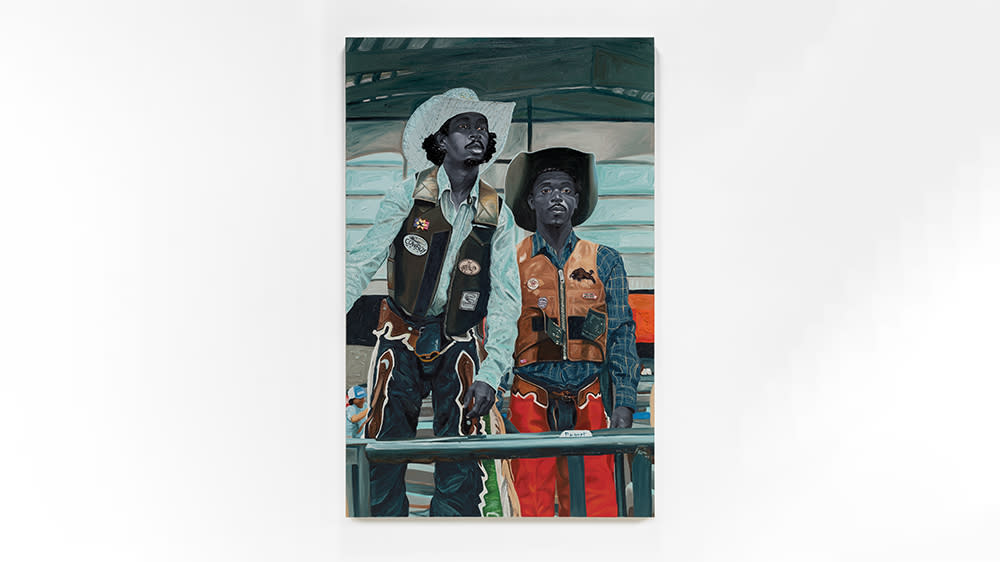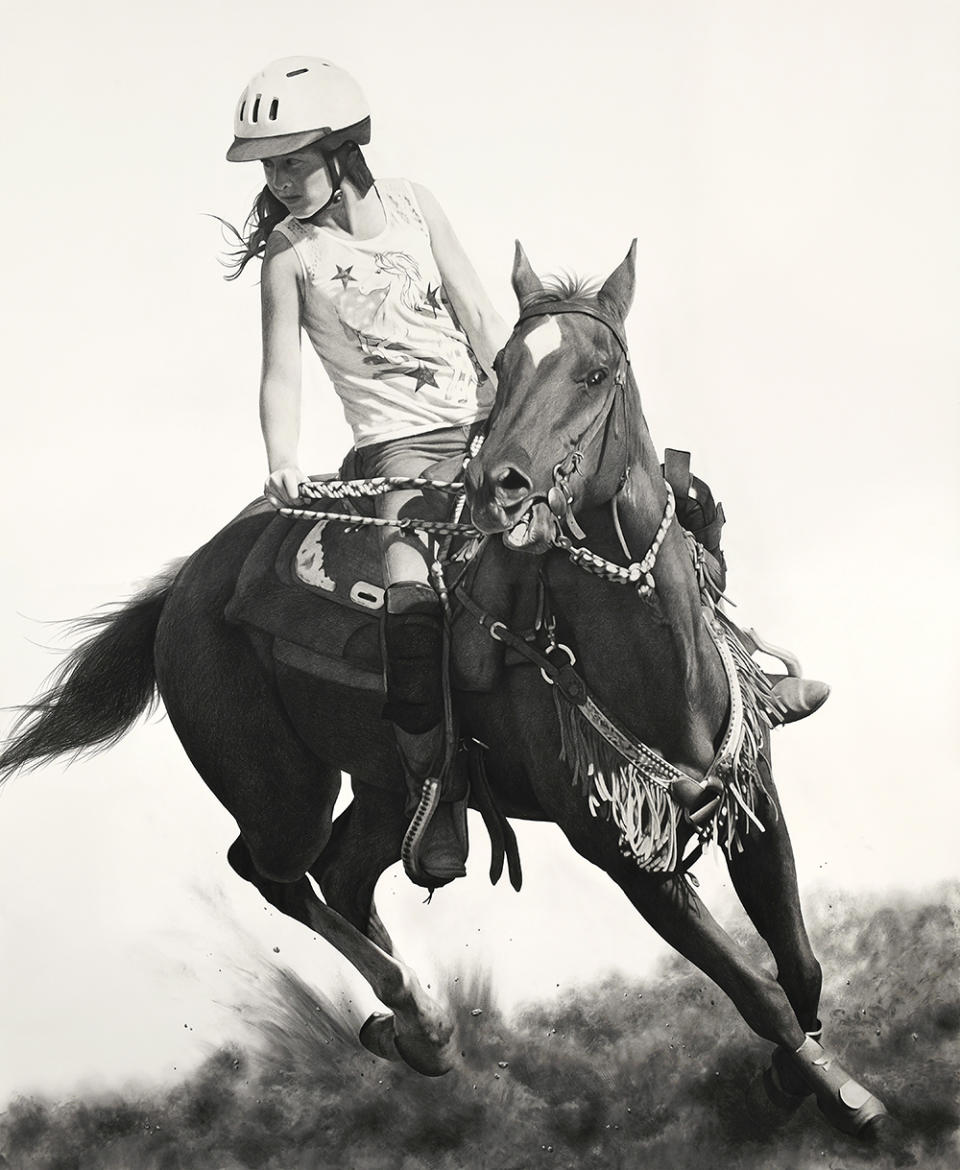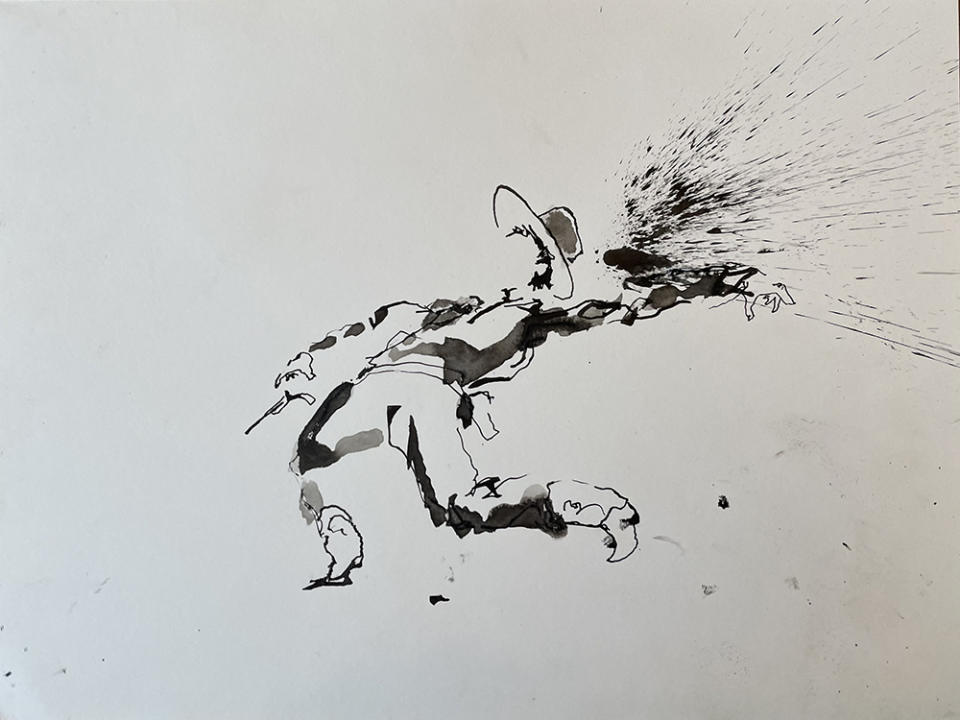Who Gets to Be a Cowboy? A New Exhibition Examines the Reality of the West’s Biggest Myth

Above: Otis Kwame Quaicoe, Rodeo Boys, 2022, oil and fabric applique on canvas
Artists have long been key to creating and propagating the foundational myth of the American cowboy. First came painters and sculptors, led by Frederic Remington (1861–1909); later, movie director John Ford, actor John Wayne, and other Hollywood players cemented our notion of the strong, silent type astride a noble steed. In the current cultural moment, no homegrown avatar seems riper for a retrofitting and a critical rethinking than the iconic cowhand.
More from Robb Report
Cambodia, Thailand, and Vietnam Say the Denver Art Museum Is Holding Stolen Artifacts
An Italian Man Found a 'Perfectly Preserved' 1,900-Year-Old Vase on the Beach
Right on schedule comes Cowboy, a large thematic group show that will take over the entirety of the Museum of Contemporary Art Denver from September 29 to February 18, with more than 70 works on display in the heart of the American West. “There’s no more enduring and compelling figure in the popular imagination, both here and abroad,” says Nora Burnett Abrams, the museum’s director, who co-organized the exhibition with senior curator Miranda Lash.

The show features some artists you might expect, including Richard Prince, who made his name appropriating images from cigarette ads, as he does in Untitled (cowboy) from 1989. The witty conceptualist John Baldessari depicts a cowboy-less hat in a spare composition, and the exhibition’s most famous name, Andy Warhol, is represented by his 1965 Western-film parody, Horse. But the focus is primarily on works by women and people of color.
“This exhibition is not your grandfather’s Remington,” Abrams quips. “We’re taking the figure off the pedestal, so to speak. On the one hand, it’s a critique of the traditional icon, and on the other hand, it’s an opening up of the lens, because cowboys have always been more diverse than was popularized.”

A sound-based work by the Korean artist Jaye Rhee—Arizona Cowboy (as part of Far West, So Close), inspired by a 1955 song that is surprisingly at the roots of the K-pop sound—will envelop visitors immediately upon entering the museum. In a video and paintings, Mexican artist Ana Segovia gives a queer spin on Mexican Westerns and cowboy masculinity. And in several tiny prints from her 2009 “Lucky Tiger” series, photographer Laurel Nakadate turns the camera on herself wearing a skimpy outfit on a horse, at once sending up both cheesecake photography and the heroic-cowboy portrait.
Amy Sherald, celebrated for her portrait of former First Lady Michelle Obama, depicts a Black cowboy wearing an American-flag shirt in her 2017 painting, with the figure set against her signature monochromatic background. The stark clarity of her work “brings up a central question,” says Abrams. “Who can represent a cowboy, and who can embody one?”
Best of Robb Report
Sign up for Robb Report's Newsletter. For the latest news, follow us on Facebook, Twitter, and Instagram.


